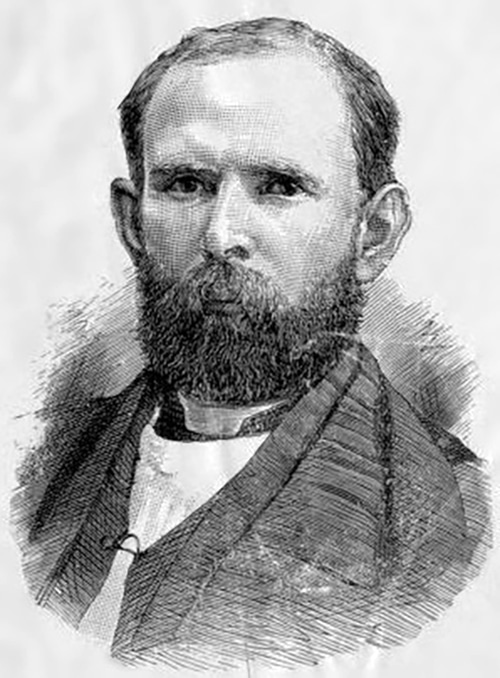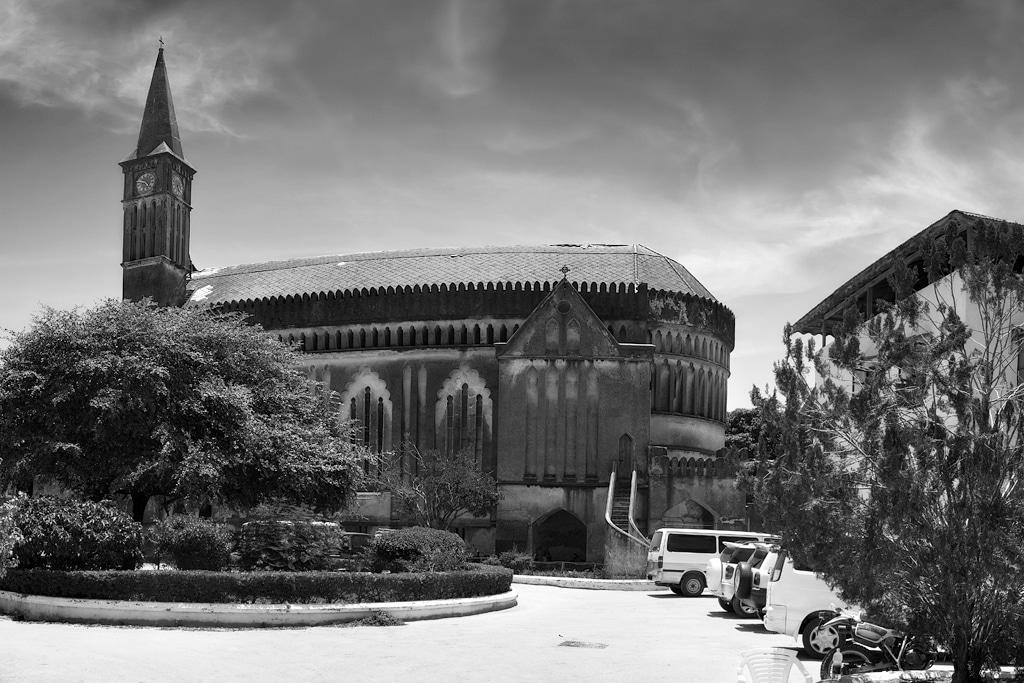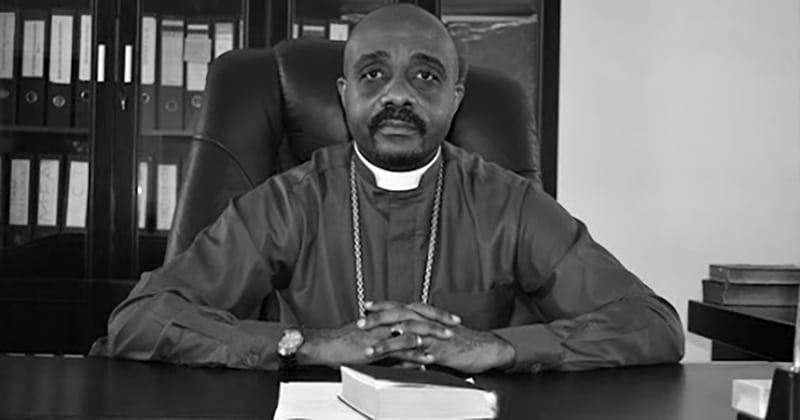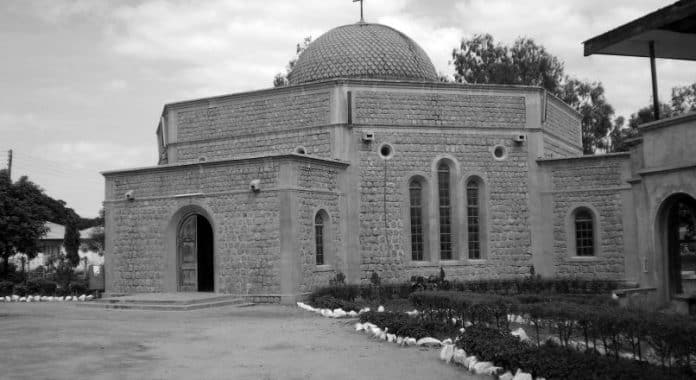The Anglican Church of Tanzania – History, Structure, Doctrine, and More
Tanzania Anglican Church belongs to the Anglican Communion in Dodoma. The church has 28 dioceses with 27 on the mainland and one on Zanzibar with respective bishops. In the past, the Anglican Church of Tanzania used to be part of the Province of East Africa with Kenya before succession in 1970. The current primate and archbishop, Maimbo Mndolwa, was enthroned on 20 May 2018 as the current archbishop and primate.
Official Name
The Anglican Church of Tanzania joined the East African Province in 1960. After succession from 1970 to 1997, it became known as the Church for the Province of Tanzania. Currently, it is called the Anglican Church of Tanzania (ACT).
History of the Tanzania Anglican Church
The first bishop for Eastern Equatorial Africa was James Hannington.
Tanganyika

Tanzania Anglican Church originated from the Diocese of Eastern Equatorial Africa (Tanzania, Uganda, Kenya,) established in 1884, the first bishop was James Hannington; however, activities of Anglican missionaries had been active in the area as the Church Missionary Society and Universities’ Mission to Central Africa started their work in 1878 and 1864 and 1878 respectively at Mpwapwa.
The diocese was divided into two in 1898 to form the diocese of Mombasa covering Kenya as well as central and northern Tanzania (the Church of Uganda evolved from the other diocese); in 1927 northern and central and northern Tanzania was split from the diocese to create the Diocese of Central Tanzania enclosing two-thirds of Tanzania with its See at Dodoma.
George “Jerry” Chambers was the first bishop, after his consecration in 1927. The second bishop of Central Tanganyika was William (Bill) Wynn-Jones. In 1955, Obadiah Kariuki and Festo Olang’ from Kenya, and Yohana Omari from Tanganyika became the first African bishops in the diocese after being consecrated in Uganda by Geoffrey Fisher, the Archbishop of Canterbury as assistant bishops.
John Sepeku was elected the bishop of the new Diocese of Dar es Salaam (previously had been the assistant bishop of Zanzibar). In 1970, Olang and Sepeku were later elected as the first archbishops to come from Africa.
The province of East Africa was formed in 1964, comprising Tanzania and Kenya whose first archbishop was Leonard Beecher. In 1970, the province of East Africa was split into two, Tanzania and Kenya, with the province of Tanzania having its first archbishop as John Sepeku. Musa Kahurananga became central Tanganyika’s Assistant Bishop in 1962, succeeded by Yohana Madinda in 1964.
Zanzibar
In 1892, the Diocese of Zanzibar was established and developed independently from the diocese of Eastern Equatorial Africa. Although evangelical missionary societies were managing Tanzania’s mainland, Anglo-Catholic missionaries evangelized Zanzibar and represented a higher form of the Anglican church. Zanzibar and the mainland territories were joined after forming the Province of East Africa.
Charles Smythies was the first bishop of Zanzibar in 1892, after a transfer from his old position as Bishop of Nyasaland. Zanzibar Cathedral in Stone Town, Zanzibar town, is a major landmark, as well as a heritage asset for the nation. Traditionally, the diocese comprised of locations in mainland Tanganyika, and by 1963 was renamed the Anglican church of Tanzania diocese of Dar es salaam and Zanzibar.
After two years in 1965, Dar es Salaam was made a separate diocese, with the original diocese renamed the Diocese of Tanga and Zanzibar. Links to the mainland finally ended in 2001, with the name reversed to the Diocese of Zanzibar. Today, the diocese includes the Pemba Island nearby. From 1892 to date, 10 bishops have been in the diocese.
After falling into poor condition, full restoration of the Zanzibar Cathedral cost one million Euros before reopening in 2016, as a world heritage center for visitors. The governments of Tanzania and Zanzibar supported the restoration with spearheading from the diocese together with the World Monuments Fund. The restored clock, historic Wilis organ, and spire are still remarkable.

Membership
Today, 2,500,000 out of the estimated population in Tanzania of 34,500,000 are Anglicans. Autonomous associations free for church members include the Tanzania Anglican Youth Organization (TAYO), the Anglican Evangelistic Association (AEA), and the Mothers’ Union (MU).
St. John’s University of Tanzania in Dodoma is among the prominent educational institutions of the church and two Provincial Theological Colleges including St Mark’s Dar es Salaam and St. Phillip’s at Kongwa
The Literature Organization (SKM), or the Dar es Salaam Bookshop and the Central Tanganyika Press (CTP) are independent church institutions that play a significant role in the lives of the Tanzania Anglican Church members.
Structure of the Tanzania Anglican Church
The Anglican Church of Tanzania has an Episcopal polity just like other Anglican churches. Tanzania’s archbishop is both a church prelate and Metropolitan. The church has a geographical system of parishes sub dived into dioceses. Currently, there are 28 dioceses, with a diocesan bishop as the head for each.
Tanzania Anglican Church Dioceses
- Biharamulo
- Kibondo
- Kondoa
- Dar es Salaam
- Kagera
- Lweru
- Mara
- Mount Kilimanjaro
- Central Tanganyika
- Mpwapwa
- Masasi
- Morogoro
- Newala
- Rift Valley
- Ruvuma
- Kiteto
- Shinyanga
- Ruaha
- Rorya
- Southern Highlands
- Tabora
- Victoria Nyanza
- South-West Tanganyika
- Western Tanganyika
- Tanga
- Zanzibar
- Lake Rukwa
- Tarime
Archbishops
The Archbishop of Tanzania Anglican Church is the Church primate. The See of the archbishop used to be fixed at Dodoma, however, now has no geographical location. Any bishop elected as Primate retains the bishop title of his diocese, including getting the title of Archbishop of Tanzania. There has been 7 archbishops following the division of the Province of East Africa into the Provinces of Tanzania and Kenya in 1970.
- John Sepeku as Bishop of Dar es Salaam (1970 -1978)
- Mussa Kahurananga (1979–1983)
- John Ramadhani (1984–1998)
- Donald Mtetemela (1998–2008)
- Valentino Mokiwa (2008–2013)
- Jacob Chimeledya (2013–2018)
- Maimbo Mndolwa (2018–present)

Other Bishops
Alfred Stanway alias Alf (9 September 1908 to 27 June 1989) was Central Tanganyika’s third bishop from 1951 to –1971. He became a deacon on St Thomas’ Day 21 December 1934 (in St Paul’s Cathedral in Melbourne and was ordained a priest after a year and consecrated a bishop by Geoffrey Fisher, the Archbishop of Canterbury at Westminster Abbey on Candlemas 2 February 1951).
Practice and Doctrine
The Tanzania Anglican Church follows the ministry hierarchy including a deacon, priest, as well as a bishop. A local version of the Book of Common Prayer is in use.
The center of the Tanzania Anglican Church teaching is Jesus Christ’s life as well as resurrection. The basic church teachings or catechism includes:
- Jesus shows the way to eternal life for believers.
- The Bible’s Old and New Testaments were written by people “inspired by the Holy Spirit”.
- Belief in hell, Jesus’s glorious return, and heaven.
- The Apocrypha are extra books used in Christian worship, but not to form doctrine.
- Jesus Christ is a fully human and full God. He passed on and was resuscitated from the dead.
- The Holy Eucharist and Holy Baptism are both necessary and great sacraments.
- Other sacramental rites include marriage, confirmation, unction, ordination, and forgiveness for a penitent.
The three foundations of authority in the Anglican church include tradition, reason, and scripture. These foundations sustain and appraise each other dynamically. This balance of reason, tradition, and scripture goes back to Richard Hooker’s work, a 16th-century apologist. Hooker’s model says the scripture is the major means to arrive at the doctrine and things stated clearly in scripture are taken to be true. Tradition determines ambiguous issues for checking by reason.
Ecumenical Relations
Just like other churches of the Anglican religion, the Tanzania Anglican Church and the overall Anglican religion in Tanzania belongs to the all-inclusive World Council of Churches.
Anglican Realignment
By December 2006, the Tanzania Anglican Church confessed to being in “impaired communion” with The Episcopal Church OF the US regarding coordinating non-celibate homosexual people as well as blessing same-sex marriages. The Tanzania Anglican Church has a membership to the Fellowship of Confessing Anglicans and the Global South and has belonged to the Anglican realignment. In June 2008, Archbishop Valentino Mokiwa was in Jerusalem for GAFCON, and in June 2009 supported the Anglican Church’s inception in North America.
Some people perceived Archbishop Jacob Chimeledya who was an evangelical as well as orthodox Anglican to have driven the Tanzania Anglican Church into “reconciliation” ground, as was being encouraged by Justin Webby, Archbishop of Canterbury, drifting away from GAFCON.
GAFCON II in Nairobi was held from 21 to16 October 2013, Archbishop emeritus Donald Mtetemela, as well as other bishops, represented the Tanzania Anglican Church. During the Tanzania Anglican Church House of Bishops meeting, in Dodoma held on 12 to 13 April 2016, accepted to the GAFCON movement again including to give Jacob Chimeledya authority to attend the GAFCON’s Primates council held in Nairobi that same month, he obliged.
During GAFCON III in Jerusalem held from 17 to 22 June 2018, a 26 member delegation represented the Tanzania Anglican Church, including Archbishop emeritus Jacob Chimeledya. Archbishop Maimbo Mndolwa registered to attend although he failed to come.
Launching GAFCON’s official branch in Tanzania was on 14 August 2019, during a meeting in Dar es Salaam that brought together again 10 bishops from the province, such as Archbishop emeritus Jacob Chimeledya, including having the support of one bishop in absentia including Archbishop emeritus Donald Mtetemela.
The bishops present decided to avoid attending the 2020 Lambeth Conference, because of the Archbishop of Canterbury’s unwillingness to discipline provinces that rejected the 1.10 1998 Lambeth resolution regarding human sexuality. On this occasion, Bishop Mwita Akiri got elected as the branch chairman. Despite signing the Jerusalem Declaration, Maimbo Mndolwa the current Archbishop hasn’t yet declared his formal endorsement for GAFCON Tanzania.
For more articles related to Worship in Tanzania click here!





























